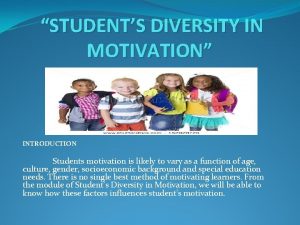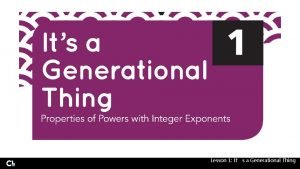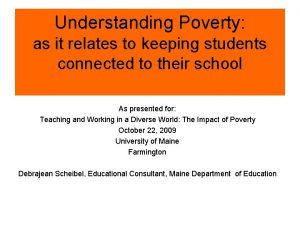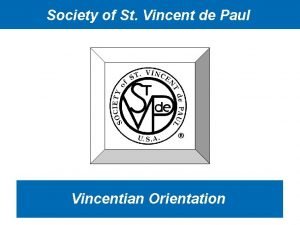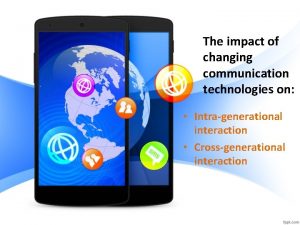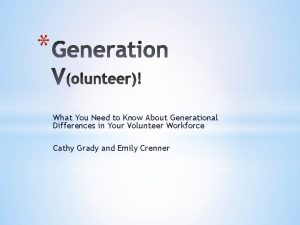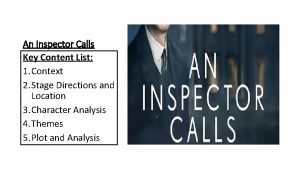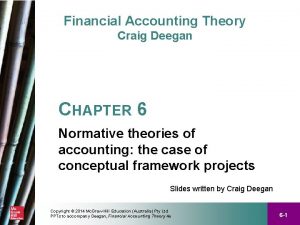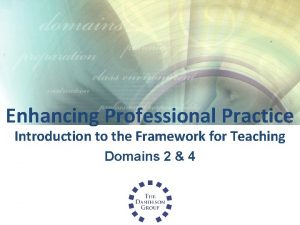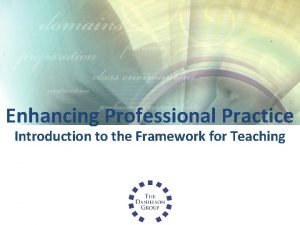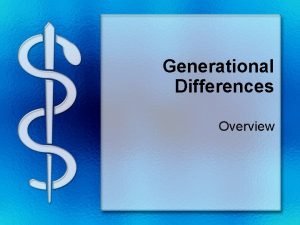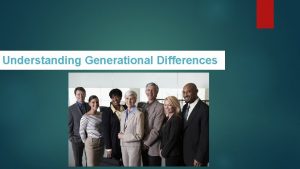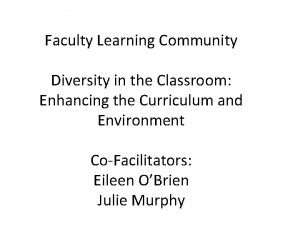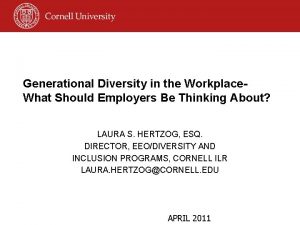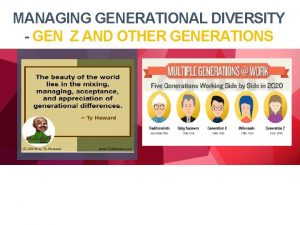Generational Diversity in the Classroom Enhancing Student Learning














- Slides: 14

Generational Diversity in the Classroom Enhancing Student Learning

Generational Categories Who Are You? ? Traditionalists Baby Boomers Born Before 1946 Born Between 1946 & 1964 Generation X Millennials Born Between 1965 & 1980 1981 & 2000

Workshop Objectives – Participants will: 1. Discuss and describe generational differences that impact community college teaching and student learning. 2. Share current attempts to differentiate instruction: pros and cons. 3. Review, practice and evaluate research-based teaching and learning strategies that support generational diversity. 4. Create discipline/course-related strategies for engaging multigenerational learner populations.

The best teachers have an intuitive understanding of human learning akin to the ideas that have been emerging from research…. they use a much richer line of inquiry to design a class, lecture, discussion section…they begin with questions about student learning. . Ken Bain (2004, p. 16 -17)

Guidelines for Discussing Dimensions of Diversity v. Provides an Opportunity for Educators to Value Differences v Focusing on One Dimension Increases the Probability of CHANGE v. Leads to Increased Student Success v. Generalizing on Any Category Requires Caution

– What do you do to differentiate instruction? – What are the pros and cons of differentiating in a college course?

Traditionalists Born Before 1946 70+ Baby Boomers Born Between 1946 & 1964 52 to 70 Generation. X Millennials Born Between 1965 & 1980 36 to 51 Born Between 1981 & 2000 16 to 35 MATCH CHARACTERISTIC TO GENERATION Multitasking Skills Learning for Learning Sake Works for Time Off Requires Relevance Wants Balanced Lifestyle Wants Blended Lifestyle Wants Independent Experienced Group & Learning Experiences Active Learners Duty Before Pleasure Wants Full Attention Work Before Pleasure Efficient Entrepreneurial Silent, Nonquestioning Works for Praise Goal-orientated

Traditionalists Baby Boomers Generation X Millennials Multitasking Skills Silent, Non. Questioning Wants Independent Learning Experiences Efficient Duty Before Pleasure Learning for Learning Sake Wants Balanced Lifestyle Wants Full Attention Requires Relevance Entrepreneurial Wants Blended Lifestyle Experienced Group & Active Learners Works for Praise Work Before Pleasure Works for Time Off Goal-Orientated

Generational Research Supports Life experience shapes the way individuals want to LEARN and BE TAUGHT…. . The time period has a significant impact on the way individuals LEARN. .

INSTRUCTIONAL IMPLICATIONS Given the generational characteristics, how might individuals from each group react to the Blizzard of 2016 and missing class time? How did the students react to your approach to “making up” class time?

Instructional Planning – Given your preferred style of working, work alone our together to create one or two new ideas for teaching this semester (or in the future). Focus on supporting the generational diversity needs of your learners.

IDEA’S POD Note Example Click here to access a POD IDEA Note

IDEA Feedback & Teaching Methods Related Reading Solutions – Student Self-Rating As a rule, I put forth more effort than other students on academic work. – Teaching Methods and Style 1. Demonstrated the importance & significance of the subject matter. 2. Related course material to real life situations. 3. Inspired students to set and achieve goals which really challenged them. 4. Introduced stimulating ideas about the subject.

Thank You for Participating!!! For Your Questions/Ideas – Please contact Amy Chase Martin, Director of Faculty Development and Instructional Media, acmartin@howard. edu , 443 -518 -4848 – Stop by the Faculty Lab in CL 232. – Visit hccfacultysupport. wikispaces. com – For this Workshop; Dr. Chris Helfrich chelfrich@howard. edu
 Students diversity in motivation
Students diversity in motivation It's a generational thing
It's a generational thing Generational poverty
Generational poverty St vinny
St vinny Intra-generational interaction
Intra-generational interaction Generational differences chart
Generational differences chart Communicating across generational differences
Communicating across generational differences Generational differences in an inspector calls
Generational differences in an inspector calls Sls learning space login
Sls learning space login Why is genetic diversity important
Why is genetic diversity important Ecosystem jigsaw activity
Ecosystem jigsaw activity Cse smart class
Cse smart class Four enhancing qualitative characteristics
Four enhancing qualitative characteristics Enhancing professional practice
Enhancing professional practice Danielson framework components
Danielson framework components
